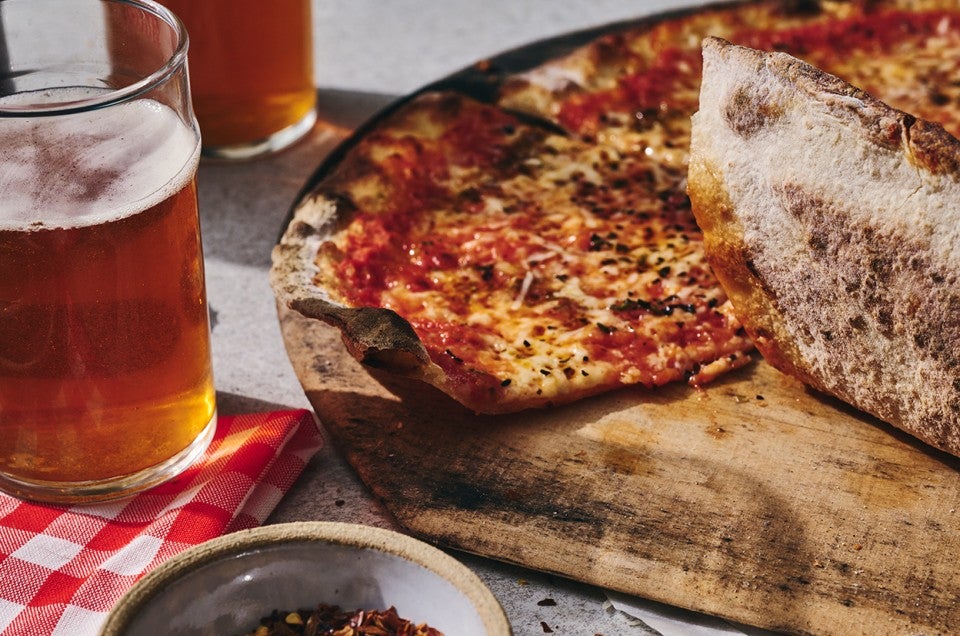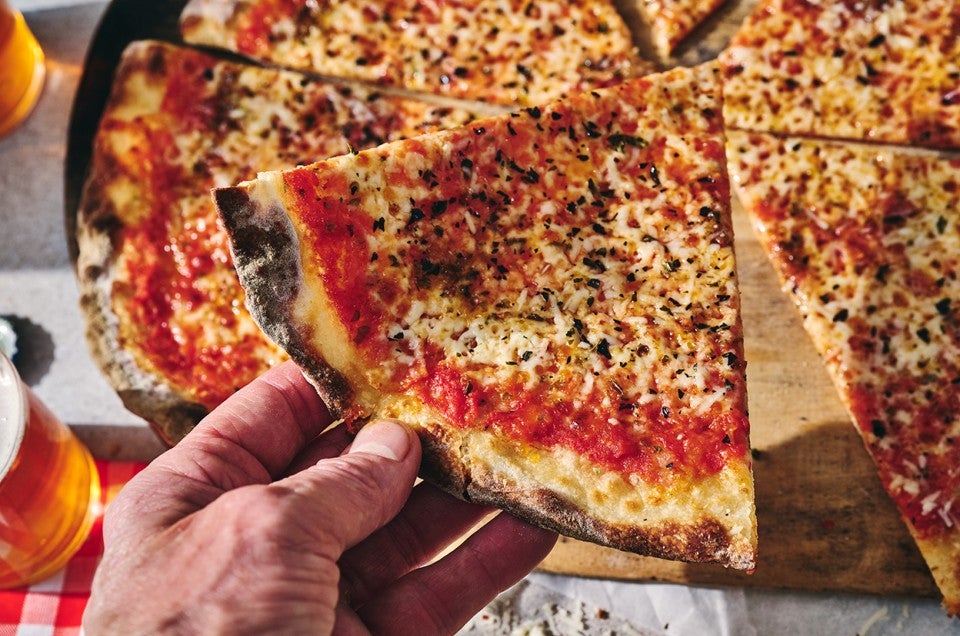-
To make the dough: Weigh your flour; or measure it by gently spooning it into a cup, then sweeping off any excess.
-
In a medium bowl, whisk together the flour, salt, and yeast until well combined. Add the water and mix until combined and homogenous, then use your hands to knead it until smooth, about 2 to 3 minutes.
-
Cover the dough and place in a warm spot (about 70°F to 75°F) to rest for 1 hour.
-
To divide the dough: On a lightly floured surface, divide the dough in half (about 200g per piece). Form each piece into a tight round and place seam-side down in a medium (1-quart) lightly greased container. (The dough will double in size.) Cover the container with a lid and refrigerate it for at least 48 hours and up to 4 days.
-
After the cold rest in the refrigerator, remove the dough and allow it to sit at room temperature, still in its container, for 3 to 5 hours before use. (In a warmer environment, aim towards the lower end of the time range; in a colder one, the dough will need the higher end.)
-
While the dough comes to room temperature, prepare the sauce. Open and strain the tomatoes. Using either a blender, food mill, or immersion blender, pulse the tomatoes to a coarse consistency. Taste and season with salt.
-
An hour before you want to bake, preheat the oven to 500°F with a baking steel or stone placed on a rack in the lower third and an empty oven rack in the upper third.
-
To shape the dough: Working with one container of dough at a time, remove the lid and invert the dough onto a well-floured surface. After about a minute, the dough will release from the container, falling to the work surface in a perfect round.
-
Without distorting the round dough, flip it over so that both sides are coated with flour. Pat and press to flatten and extend the round, starting first with the edges and working towards the center.
-
Once the dough is flattened and degassed, switch to a rolling pin and roll to an even thickness of 1/8" and a rough 13" diameter. While rolling, invert the dough and flour the surface as necessary to prevent sticking. If the dough resists rolling, set it aside for 10 minutes to relax. Transfer the shaped dough to a wooden or metal peel that’s been lightly dusted with semolina or cornmeal. If the dough retracts when transferring it to the peel, gently re-form it.
-
To bake the pizza: Evenly spread about 1/2 cup (140g) sauce over the surface of the dough, then sprinkle on 1/2 cup (57g) grated mozzarella. (You’ll have about 1 cup of sauce leftover; freeze it for the next time you make pizza.) Garnish with pecorino Romano, a sprinkle of dried oregano, and a drizzle of olive oil.
-
Use the peel to transfer the pizza onto the steel, then bake for 5 minutes. Check the bottom of the crust — it should be spotted and charred in places, and the edge crust should start to have some color. If not, rotate the pizza and bake for another 1 to 2 minutes.
-
When the bottom has sufficient color, transfer the pizza to the top rack, switch the oven to broil, and broil for 2 to 3 minutes, until well-charred in spots. (Don’t walk away — pizza can go from perfectly charred to burnt quickly.) Home ovens vary substantially, so use the visual cues and your own preferences to gauge when you’ve achieved the perfect bake.
-
Remove the pizza from the oven and cool briefly on a wire rack before slicing and serving.
-
Return the oven to bake mode and let the steel come back to temperature. Meanwhile, shape and top the second round of dough. Bake according to instructions.
-
Storage instructions: This pizza is best enjoyed the day it’s baked. Store leftover New Haven-style pizza in an airtight container at room temperature for up to 2 days; to reheat, wrap in foil and place in a low-temperature oven until warm.






















